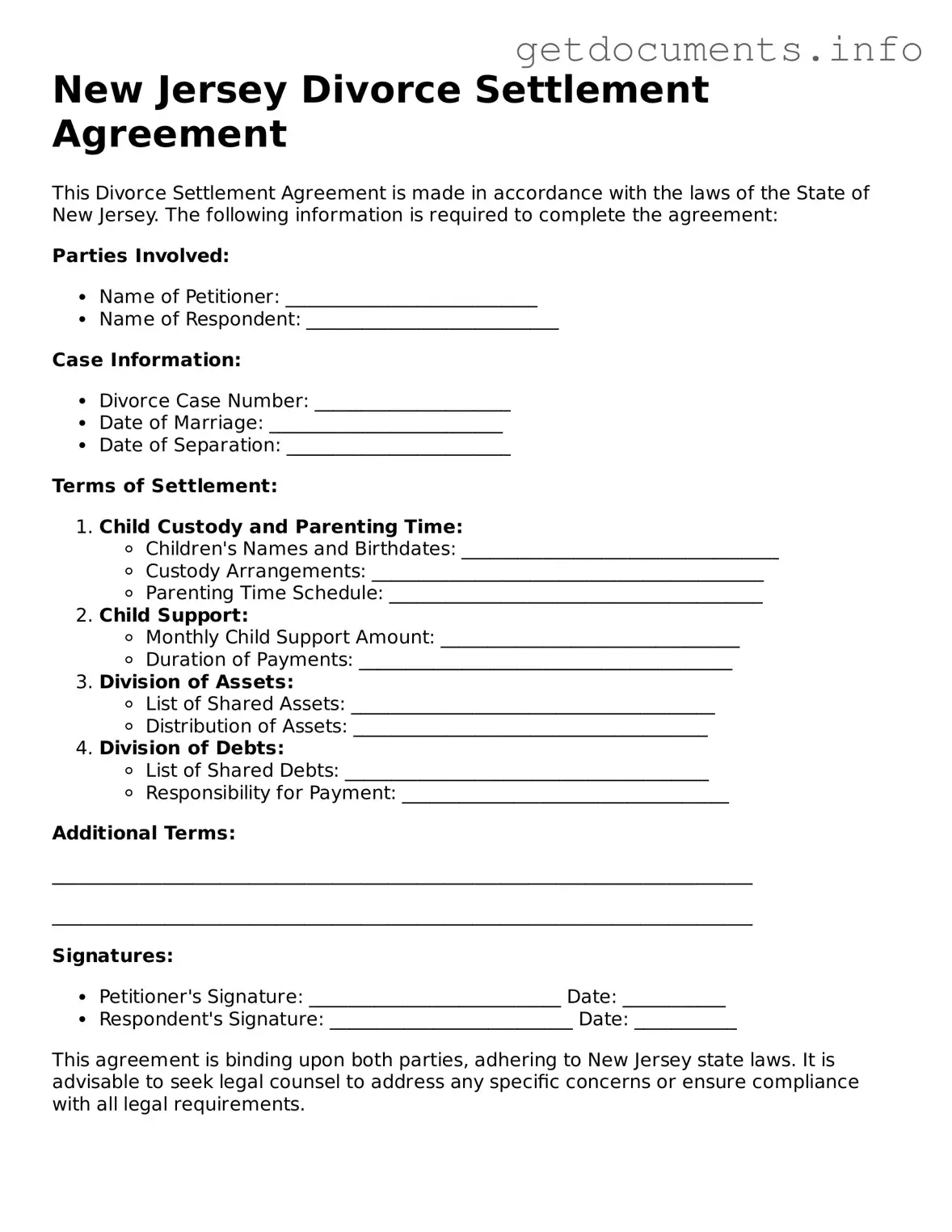Free Divorce Settlement Agreement Template for New Jersey
The New Jersey Divorce Settlement Agreement form is a legal document that outlines the terms of a divorce, including asset division, child custody, and support obligations. This form serves as a crucial tool for couples to reach an amicable resolution, ensuring both parties understand their rights and responsibilities. To simplify your divorce process, fill out the form by clicking the button below.
Access Divorce Settlement Agreement Editor
